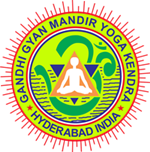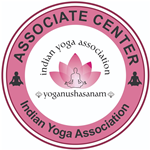The position of the body is not always the same generally. It always changes. Sitting, standing, lying, rising, bending, turning etc. All such physical postures are treated as asanas.
When mind is concentrated on a particular spot of the body, the physical postures-asanas are automatically converted into Yogic postures-Yogasanas.
The life of the man, totally depended on the nature. Munis, Rishis, Yogis, Yatindras etc. studied the nature and the functions of the parts of human body. Accordingly, they folded the body in every possible angle and discovered many Yogasanas. They practiced them, realized their benefits and later popularized them. It is said that there were as many as 84 lakh asanas in use. They were reduced to 84 thousand. Now they have been still reduced. It is better to consult Yoga experts before practicing asanas. There are separate Yogasanas for separate purposes; different Yogasanas for the people of different ages; different Yogasanas to cure different diseases and ailments and so on and so forth. The Yoga experts or teachers diagnose the problems, identifying the deficiencies and then prescribe certain asanas for practice as remedy. They also guide in practicing them. Along with the prescribed asanas it is always better to practice Surya Namaskaras every day. They benefit the body and mind much more than the expectations. The Yoga practitioners, have to know the rules, regulations, procedures, directions, do’s and don’ts about the Yoga practices before they implement them.
General rules to be followed:
1. One has to get up early in the morning, perform few asanas on the bed itself, then wash face and mouth, drink a tumblerful of water, attend to the calls of nature, clean the mouth and teeth, have a bath and then start the Yoga practice. If it is not convenient in the morning, it may be practiced either in the afternoon or in the evening.
2. Asanas may be practiced even before taking a bath, one has to wait for some time to have a bath after practice.
3. Asanas are to be practiced with empty stomach. One has to wait for 4 ½ to 5 hours if food is taken, and 2 ½ hour if one takes refreshments, so that the food is digested.
4. Yoga may be practiced in an open airy place, on a level ground with sufficient light. It is not to be practiced in the stormy wind.
5. The clothes on the body should be loose and minimum. Ladies too should have minimum clothing. They better wear Punjabi kurta and pyjama.
6. One should not talk while posing asanas, breathing only through the nose, should close the mouth totally.
7. One should not pose asanas on a bare ground. Something either a carpet or a blanket or a bed sheet or a clean cloth should be spread on the ground.
8. Preganant women should not resort to asanas till their third month and after the seventh month. They may practice certain Yogasanas under the guidance of physicians or Yoga experts. Yogasanas are harmful during the menstrual periods. Any how they may practice micro exercises and meditation.
9. Persons who underwent operations or have heart disease or any such other prolonged disease are advised to consult the experts before they attempt any asan.
10. One should neither hurry nor haste while practicing asanas. One should not strain the limbs nor should feel tired.
11. One should massage the face and body with the palms before and after Yoga practice. At the end of the asanas one should rest in Shanti asan to relax and feel fresh.
12. It is necessary to practice asanas every day regularly according to the prescribed norms.
13. While practicing asanas one should concentrate totally on the posture alone for better results.
14. One should practice Yoga in a peaceful and calm state of mind. One should not practice when he is in dissatisfaction, weak, depressed, sorrow, anxious, fearful or any such other abnormal mood. It is better to lie down in Shanti asan calmly and give rest to body and calmness to the mind, in such cases.
15. At the initial stage any process / asan should be done only for a few possible seconds. After being used to, one may increase the time of the pose of each asan / kriya.
16. After practicing asanas, one must take sufficient rest and then may take meals.
17. Very small children should not be forced to practice asanas. Even grown ups also should not be asked to practice asanas immediately when they come to school; as they eat their food before coming to school and their stomachs are not empty to facilitate them for the asanas. Asanas may be practiced at least 2 ½ hours after taking the light meal.
18. Senior persons above 60 years of age are advised to practice light asanas. Meditation for longer time will be of much help to them.
19. Those who go for walkings should take sufficient rest before they start asanas or after practicing asanas, taking rest and then go for walking.
20. Yoga should be started with Micro Exercises for warming up followed by Suryanamaskar, and then Shanti asan to relax the body and mind, and only then go for other asanas.
21. Prayer, Pranayaam and relaxation are must before and after Yogasan practice.
22. During the practice, if one feels tired or breathing rate is increased or heartbeat becomes abnormal or one sweats intensively or feels giddiness then, asanas should be immediately stopped and should take rest and relax.
23. Shanti asan is a must before and after any Yoga practice.
24. One must compulsorily urinate after practicing asanas. If felt during practice, should attend to the natural calls. One should not hold them by force.
25. One may drink little water if he feels so during the practice. “Arogyamritam” may be taken before or during practice of Yoga, if available.
26. Those who suffer from constipation should drink two or three glasses of warm water and practice Shankh Prakshalan Asanas two or three times. So that constipation may be reduced. This facilitates Yoga practice.
27. During the practice generally it should be breathed out whenever the abdomen or chest is pressed and breathed in whenever they are brought to normal. Specifically, one should breath out when bending forward, or bending sideways or twisting backwards.
28. All the above rules are applicable for Yogasanas, Pranayaam and Dhyan. The practitioners may change them to suit their convenience without major distraction.
![]()
One should know and understand the above rules and procedures and implement them so that he can lead a disciplined life and get maximum advantages.
One should practice Yoga and enjoy its fruits and encourage others also to practice Yoga.
“Lokah Samastah Sukhino Bhavantu…”
“Let all be happy”
![]()

